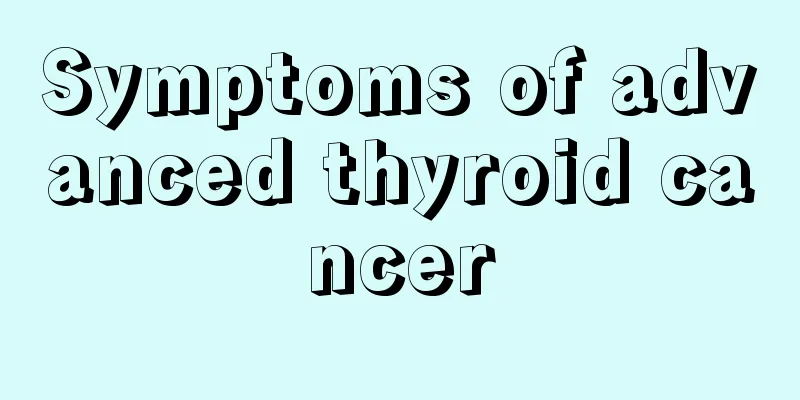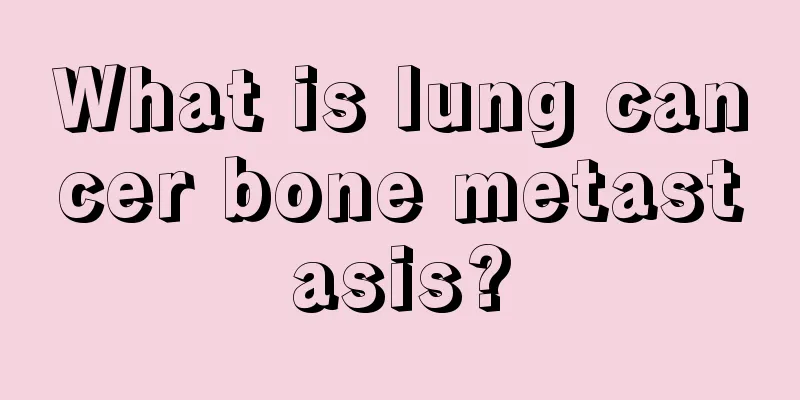Symptoms of advanced thyroid cancer

|
Thyroid cancer is the most common thyroid malignancy, including four pathological types: papillary carcinoma, follicular carcinoma, undifferentiated carcinoma and medullary carcinoma. Except for medullary carcinoma, the vast majority of thyroid cancers originate from follicular epithelial cells. The typical clinical manifestations of thyroid cancer are: thyroid masses, hardness, fixation, and uneven surface are common manifestations of various cancers; the gland has little mobility up and down when swallowing. Undifferentiated carcinoma can cause the above symptoms in a short period of time. In addition to obvious mass growth, it is also accompanied by the characteristics of invading surrounding tissues. Advanced thyroid cancer will produce hoarseness, breathing, swallowing difficulties, and sympathetic nerve pressure, leading to Horner syndrome and ear, pillow, shoulder pain, local lymph nodes, and distant organ metastasis. Some pain may occur. Cervical lymph node metastasis occurs earlier in undifferentiated cancer. Medullary carcinoma itself can produce calcium and calcium serotonin, which can cause diarrhea, palpitations, and redness of the face. Symptoms and treatment of thyroid cancer Thyroid cancer includes four pathological types: papillary carcinoma, follicular carcinoma, undifferentiated carcinoma and medullary carcinoma. The typical clinical manifestations are: hard and fixed thyroid tumors with rough surfaces, which are common manifestations of various cancers; hoarseness, breathing and swallowing difficulties, Horner syndrome of sympathetic nerve pressure and invasion of cervical nerves in the late stage. Ear, occipital and shoulder pain, local lymph nodes and distant metastasis. The treatment principle of thyroid cancer is mainly comprehensive surgical treatment. Endocrine therapy is used after surgery, and radiotherapy is selected when necessary. Can early thyroid cancer be cured? Thyroid cancer, especially papillary carcinoma, is a type with low malignancy, slow progression and good healing. Early detection, no peripheral lymph node metastasis, and relatively small cancer tissue. 131 iodine can achieve clinical cure through surgery and 131 iodine treatment. Generally speaking, the life expectancy after cure is not much different from that of a normal person. The 10-year survival rate can reach 95%, and the 20-year survival rate can reach 90%. |
<<: Clinical symptoms of ovarian teratoma
>>: Is surgery necessary for early prostate cancer? How much does it cost?
Recommend
Doctors call for: Regardless of whether you are old or young, if you have these 4 symptoms, you may have cancer!
Aunt Zhang, 60 years old, has been feeling someth...
How to use rose essential oil
After rose essential oil was called essential oil...
Atherosclerotic plaque, how much do you know about it?
There are many obvious symptoms of atheroscleroti...
Three itchy spots in the early stages of cervical cancer
The symptoms of early cervical cancer are mainly ...
How much does thyroid cancer surgery usually cost
How much does it usually cost to perform thyroid ...
How to do height growth stretching exercises before going to bed
Growing taller before going to bed is a better me...
What are the early symptoms of nasopharyngeal cancer and what are the dietary guidelines?
What are the early symptoms of nasopharyngeal can...
What are the effects and functions of citronella essential oil?
Lemongrass is a relatively common plant. Because ...
Symptoms of Amebic Keratitis
Amebic keratitis is a new corneal infection cause...
What are the symptoms of canine cystitis
Canine cystitis is a disease called cystitis in d...
I get diarrhea if my stomach gets a little cold
Diarrhea is a very common phenomenon in life. Man...
What are the MRI manifestations of prostate cancer
MRI mainly relies on T2-weighted images to detect...
Reminder! How to prevent bladder cancer
In recent years, bladder cancer has become one of...
Is high temperature fumigation effective in removing formaldehyde?
Recently, there was an incident that went viral o...
Prostate cancer is caused by these reasons
Prostate cancer is a very common tumor disease in...









